Do you teach a wiggle worm? Or perhaps your learner(s) have been sitting for a while and you can see the energy level going down. Enter wiggle brain breaks! These wiggle brain breaks can help wake up and recharge the brain, something I particularly need after lunch!

*This post contains affiliate links.
**The free printable can be found towards the end of the post.
What is a brain break? A brain break is a simple and quick activity that you can implement before, during, or after a teaching time that can get the blood pumping and more importantly, energizes the brain. Brain breaks can be more academic in nature, but today I’m sharing some that get the wiggles out.
Wiggle Brain Breaks
My 2nd grader, in particular, has always needed frequent breaks. Otherwise, his brain takes a hike into la-la land. He will actually tell me, “Mom, it feels like my brain is falling asleep.” I have been using brain breaks {although we didn’t call them that} since he started doing more “formal” schoolwork with Reading the Alphabet about 4 years ago.
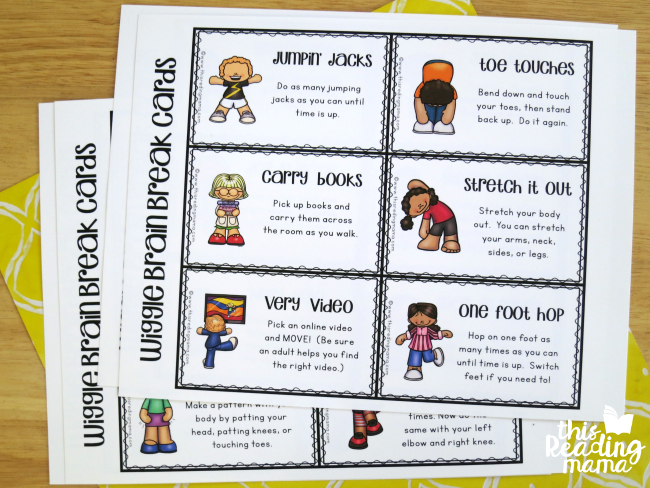
Just print them off,
cut them out, and hook them together with a clip.
Stick to just two or three of your favorites, or change it up each time. Above all, keep it simple and manageable for you and the kiddos you teach! If you have hardly any space, activities like push-ups might not work for you. Jogging in place could work though.
While most of the wiggle brain breaks are self-explanatory, there are a few I want to break down for a second.
1. Very Video
One of our favorite ways to get the wiggles out is to put on a YouTube video. For younger kids, we’ve enjoyed Super Simple Songs’ videos. Open, Shut Them was probably the favorite from them.
Actually, our absolute favorite go-to website is GoNoodle. {I love that it doesn’t have ads!} They do have a YouTube channel, but it does have ads. You can see two of our videos from Go Noodle here–> Pop See Ko and Go Bananas!
2. Crossing the Midline
Now, I know I’m not an OT here and I don’t plan on going deep into this, but I’ve been in the teaching field long enough that I’ve heard this over and over. The midline is an “imaginary” vertical line drawn from head to toe that splits you in half left to right. When we ask kids to cross one hand {or one leg} over that midline to the other, we’re getting the two hemispheres of the brain to communicate with each other to coordinate the movement.
3. Weight Bearing
While my oldest son has not been officially diagnosed with sensory processing, I have explored it some with an OT friend of mine. I’ve been told that heavy work activities, such as push ups or carrying books can help calm his nervous system and help him focus better. I’ve included a few of these kinds of brain breaks, too.
- Animal Sight Word Chants
You might also like our Sight Word Chants {for animals & people} and Sight Word Action Cards, great for getting out the wiggles, too.
Enjoy!
~Becky
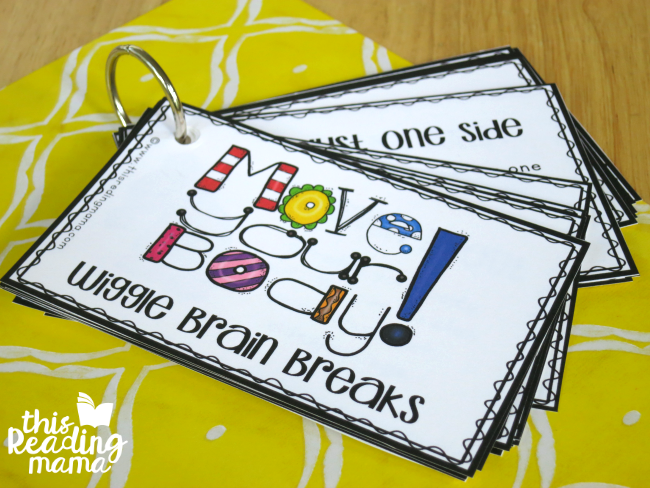
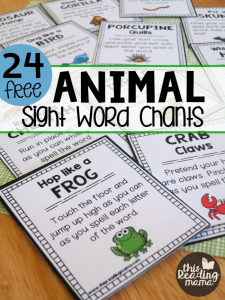
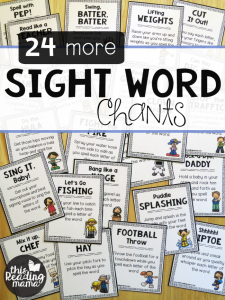
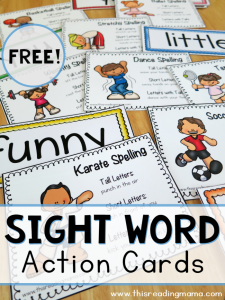

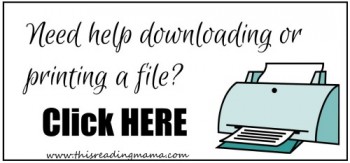
These are awesome. Thank you!
Thanks, Becky!! Cute and very useful resource. Just wanted to let you know that you can watch the GO Noodle on You Tube without all the ads by using the FREE program Watchkin. Here is the article where I first learned about it.
http://www.freetech4teachers.com/2015/03/watchkin-another-tool-for-distraction.html#.V-5GifArIdU
Love that you’ve covered those wiggly kids with SPD, it’s like getting our OT done on the fly
🙂
Thank you for the free printable.
You’re welcome!
Thank you so much for sharing these wonderful resources. We are using them in New Zealand 🙂
Awesome!! 🙂